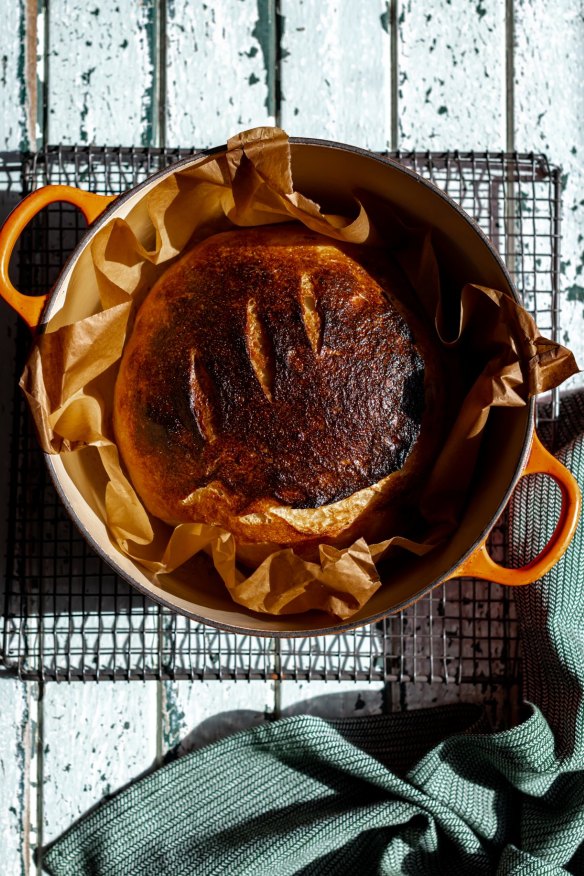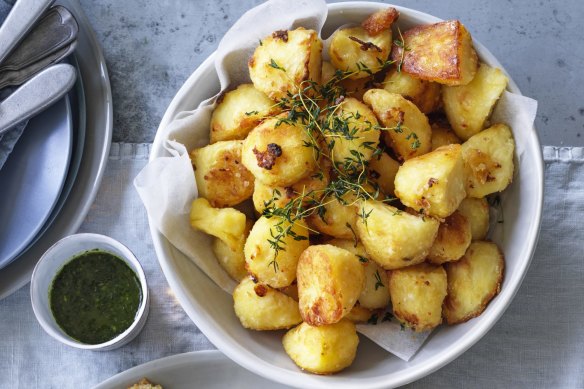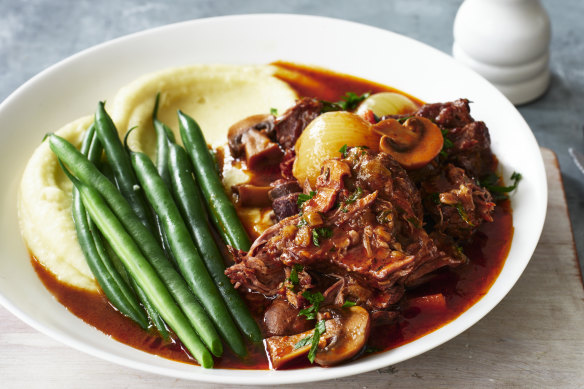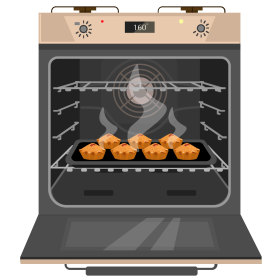Why everything you thought about preheating your oven may be wrong
Alice Zaslavsky settles the debate once and for all in the interests of saving time, energy and money every time we cook.
“To preheat, or not to preheat – that is the question” … or at least, that’s been the question at the centre of an internet storm across multiple media and social media platforms last week.
Hundreds of readers and cooks have weighed in to the heated argument (or should that be “preheated”?) and it is worth settling the debate once and for all in the interests of saving time, energy and money every time we cook.
Much of what we know about cooking is either picked up by osmosis from older cooks in our midst, or from following recipes. But it’s worth questioning these assumptions and trying new things when we can.
So when should we throw the rule book out the window, and when should we twiddle our thumbs waiting for the oven to do the thing?

When to preheat
- Bread: A hot blast at the start helps form a crunchy crust while taking full advantage of the yeast activity and trapping holes (known as “alveolation”). To maximise this rise, pop a little ovenproof vessel of water into the oven, too, to create a burst of “steam”, as you might get from a professional combi oven.
- Fresh pizza: Preheating the oven to searing hot temps (along with a pizza stone, if you’ve got one) helps bring forth the kind of blistered burnish you want to see from a Naples-style pizza while keeping the middle sufficiently soupy.
- Cakes and cookies: Where temperature fluctuations can make or break the final bake, following preheating instructions and understanding your oven’s hot spots is always advisable. Precision-baking is precise for a reason.
- Anything eggy: From souffle to quiche, egg-based dishes need some heat to trap the air into place. If you’ve ever suffered through a rubbery frittata, you’ll remember to preheat more egg-sactly next time.

- Roast potatoes: The crispiest roast spuds are also beneficiaries of The Hot Blast effect. While the oven heats up, place an oily tray inside; meanwhile, parboil your potatoes. The hot oil will coat the spuds and give them the crispy crack you seek.
- Roasting meat and chicken: Cuisson ( “doneness”) relies on some specificity, and anything that’s spawned its own thermometer clearly benefits from the consistency that preheating brings. The good news is that this waiting around means you’ve got time to take the fridge chill off (so it doesn’t seize), and helps keep all of its juiciness from oozing out while the oven gets its act together. Starting bigger bits in a searing-hot oven helps to activate the Maillard reaction (browning), and then you can drop the heat to something more moderate to cook it through. If you’re keen on maximising a rich brown crust, use the oven preheating time to sear the sides of said roast in a preheated, heavy-based pan (click here to ensure your meat is well seasoned). There are “cold oven” roast chook recipes out there, but I’m still in the hot oven, less time camp here.
- Delicate veg: Brassicas (the cabbage family) and other delicate green things prefer a hot oven. Burnished brussels sprouts, broccoli, cauliflower, asparagus − all of these benefit from a hot blast, and then as little time in the oven after that as possible. Pop the tray into the oven as it preheats, then roast oiled veg cut-side down to maximise the access each piece has to some sweltering surface area. For the best texture, blanch first (as a shortcut, I’ve taken to pouring a kettle’s worth of water over the bits in a heat-proof colander in the sink while I wait for the oven to preheat).

When not to preheat
- Reheating leftovers from the fridge: Allowing the oven to warm up with the ingredients inside means you can cook the thing more evenly without overcooking it the second time around.
- Root veg: Sticking to the stove-top adage that something that grows from cold cooks best from cold can also work for the oven. That means whacking carrots, parsnips, sweet potato, turnips, swedes and the like onto a tray and into the oven before turning it on. It’s a revelation, leading to more tender middles, without the frizzled ends.
- Braises: Anything that’s about to spend hours at a low-n-slow doesn’t need forewarming. It’s still worth searing any meat that’s going in here first, as it’ll help with building flavour.
- Frozen pizza (and other freezer foods): Whacking these into a cold oven then cranking the heat will mean you can get on with your life while the food cooks, and the thawing ice crystals will keep the food from drying out. Just remember that the cooking instructions on the box are based on preheating to account for different oven preheating times, so you’ll need to adjust the cooking time accordingly.

Another reason why recipe writers recommend preheating is for consistency. The typical preheating time allocation is usually around 20 minutes − but modern oven preheating times vary widely. Depending on the make and model, yours will take anywhere from five to 20 minutes to preheat.
Taking the time to get to know your oven will pay dividends because you’ll know how much leeway you have for the recipes when preheating matters less, and how much time you have to prep and potter where it’s still a non-negotiable.
If you’ve got your oven manual handy, the information should be included. Otherwise, next time you’re preheating the oven set a stopwatch to time how long it takes to get to “moderate” − 160C fan-forced (180C conventional).
Alice’s tip: If you need a hot oven fast, try cranking the grill for four minutes, then switching to the regular oven setting. This should halve the amount of time it takes your oven to get to temperature and allay any familial flim-flam when the time comes to cooking dinner.
Send your Ask Alice questions and conundrums to alice@aliceinframes.com
The best recipes from Australia's leading chefs straight to your inbox.
Sign up